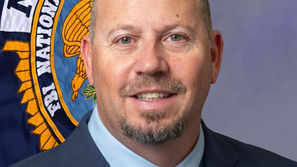Conley didn’t impress this crowd
- Bill Coate
- Sep 2, 2020
- 3 min read

Madera County Historical Society Judge William Conley, Madera County’s first Superior Court Judge.
If they ever establish a Madera County Hall of Fame, Judge William M. Conley will surely be near the top of the list. He became the first Superior Court Judge of Madera County after the election of 1893, and remained on the bench until he retired in 1921.
At the time of his election, Conley was only 26 years old, making him the youngest superior court judge in California (That record still stands today.)
It didn’t take long for Conley to establish his record as an accomplished jurist. He was so respected that soon he was being assigned to hear cases in other counties, and the most notorious of these was the bribery case of Clarence Darrow.
Darrow got himself in a bit of a bind in Los Angeles in 1912 as a result of the bombing of the Los Angeles Times building by a couple of union leaders who were leading a strike. Darrow was called in to help defend them and before it was all over, the nationally known barrister had been charged with attempting to bribe two of the jurors. He was acquitted in his first trial, and in his second trial, they got a new judge. The Governor looked around and decided that Judge Conley was just the man to take over, so Madera’s superior court judge caught the train to Los Angeles.
Although Conley had prepared himself for the trial, he wasn’t quite prepared for the public reception he received in Los Angeles. He had run into this particular problem once before in Sacramento when, because of his youthful appearance, people mistook him for a page boy. In L.A., however, the problem was much worse. The crowd thought he was a gate crasher and roughed him up a bit. The trial started on October 21, 1912. When the jury arrived at 8:30 that morning, the bailiffs at the Hall of Records had their hands full; the halls were packed. Then at a few minutes after 10:00, Judge Conley arrived. He nonchalantly attempted to make his way through the crowd to the door. The people closed ranks and pushed back, after which Conley demanded some respect. The tightly wedged crowd paid no attention, and as the judge pushed forward the would-be spectators jostled him back.
One man said to him: “Here, quit your crowding. What do you think this is, a football game?”
“But I have got to get in, gentlemen, said the Judge, “Please make way.”
“Yes, so have the rest of us got to get In.” was the reply.
“But,” argued Conley, “I have to get in there because I am the Judge of the court.”
The other fellow laughed uproariously, exclaiming, “Do you know how many judges have got by me today? Well, I’ll tell you, five! So just can that stuff. It doesn’t go here; just quit crowding.”
Judge Conley backed off and gave it up. He went to the chambers of a Judge down the hallway — a Judge Wellborn —and asked him if he knew him.
“Know you?” said Judge Wellborn in surprise. “Why, certainly. Why shouldn’t I know you? Everybody knows you.“
“I don’t know,” Judge Conley said. “I Just tried to get into the court room, but the spectators wouldn’t let me. I told them that I was the Judge of the Court, and they wouldn’t believe me.”
Judge Wellborn got up and accompanied Judge Conley to the court room and together they managed to plow their way through.
Darrow’s second perjury trial finally commenced under the watchful eye of Judge Conley, and on March 8, 1913, it ended with a hung jury voting eight to four for conviction. The judge discharged the jury, and he finally got to come home.
Judge Conley served on the bench in Madera County for another eight years before retiring and going into private practice. After trying over 1,300 cases, only four were reversed on appeal, and of those, two were jury trials.
So, the young lawyer who came to Madera to lead in the fight for the creation of Madera County wound up rendering justice all over the state for 28 years.
Judge William M. Conley was an uncommon man in uncommon times.


























Comments